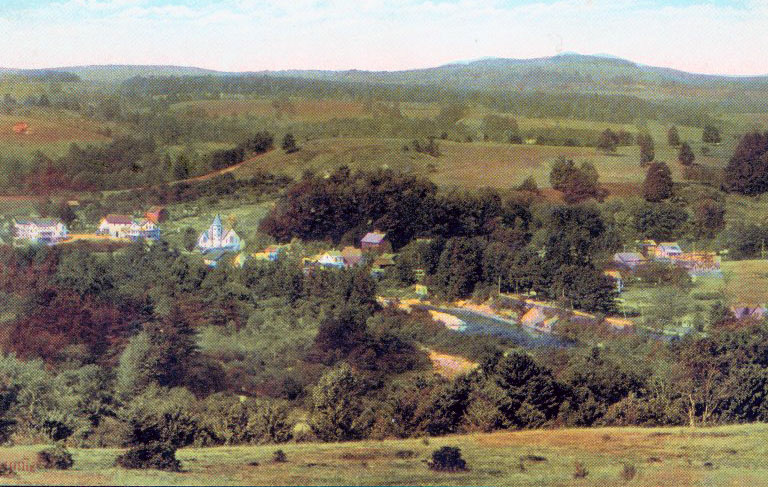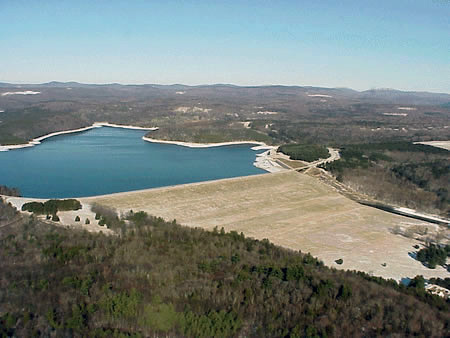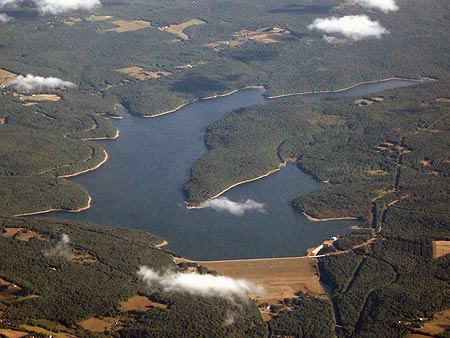Reservoir Construction
Fresh water for New York City was an issue since the 17th century. By the early 19th century the growing city could not provide its citizens with enough fresh water locally, so in 1842 the city completed a project damming the Croton River 37 miles north which shipped fresh water into the city via aqueduct. Due to continued water problems, the state of New York created the Board of Water Supply (BWS) in 1905 to “plan and construct major additions to the city’s water sources to ensure an ever ready supply.” The BWS first constructed the Ashokan Reservoir and a 92 mile aqueduct that was completed in 1915. Although this project alleviated immediate problems, a new project plan was approved in 1928 to supply water to NYC from the Rondout River and Delaware River Tributaries including the Neversink River. Delaying this project was a court case in which Pennsylvania, which used Delaware River water to supply Philadelphia, objected to the upstream reservoir. Once the case was settled, a lack of state funds delayed the project until work began in 1936 on the Neversink and Rondout Reservoirs.

Map of New York State Reservoir System courtesy of New York City Department of Environmental Protection.
In 1936, the state enacted its power of eminent domain and mandated the sale of land in Neversink to the city for the purpose of building two new reservoirs. By 1955, more than 250 land owners lost all or part of their land to the Neversink and Rondout Reservoirs and New York City became the largest land owner in the town.[1] After construction was completed, the most fertile farmland as well as the hamlets of Eureka, Montela, Lackawack, Neversink and Bittersweet were sacrificed and replaced by these two massive bodies of water.[2]
Because of the extensive manpower needed for the construction of two reservoirs, multiple aqueducts and supporting infrastructure, the population and economy of Neversink were temporarily stabilized. Much of the labor needed for the construction of the reservoirs was provided by local citizens living in Neversink and the greater Sullivan County/Ulster County area.[3] But bleak predictions of the post-construction future of the town followed. The Neversink Town Board estimated a 20% decrease in the population of the town after reservoir completion. Also, New York State government officials believed that the reservoirs made Neversink a “sub-marginal land, fit only for the growing of trees.”[4]



Left: Image of valley containing Hamlet of Neversink prior to Reservoir Construction. Center and Right: Images of same valley post-construction. (downloaded from betweenthelakes.com Images from nyc.gov)
Citations:
1. Purcell, 109.
2. While the Eureka, Montela, Lackawack and Bittersweet communities were abandoned, the Hamlet of Neversink was “moved” east of the Reservoir and still exists in 2012. The “Hamlet of Neversink” should also not be confused with the “Town of Neversink” which shares the same name. Montela and Lackawack were located just across the Neversink border in The Town of Wawarsing in Ulster County.
3. Purcell, 110.
4. “Toward a Brighter Future.,” The Tri-Valley Townsman, 14 July 1948, 2.
Daniel Curry
George Mason University
Last Updated 14 May 2014
copyright May 2014